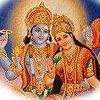Originally posted by: .Vrish.
- Vedas are Vedas - Rig, Yayur, Samar and Atharva. Since when were Upanishads or Puranas Vedas?
Ever since Vedas told me that they are part of Veds!! 😆 I'm no Sanskrit scholar but do know enough of Sanskrit to get a general idea of what a Sanskrit text is telling me.
Rigved has 21 branches, Yajurved 100, Samved 1000 & Atharved 9. Total is 1130. Now every Ved 'mantra' has a 'mantra part i.e. Sanhita' and then a 'Mantrath part i.e. Brahman.' 'Brahman' are recorded in 'Aaranyaks' whose chapters form 'Upnishads.' It's as simple as that.
For example, Rigved's 'Shakhayan Aaranyak' has 15 chapters. Third to sixth chapter of this aaranyak form 'Kaushitaki Upnishad.' Another example, ninth chapter of Samved's 'Talavkaar' aaranyak is 'Kanopnishad.'
So, if I'm to study Veds by excluding the most important, in fact critical parts of Veds, Aaranyaks & Upnishads, (because 'sanhita' part as a stand alone is of little use to us) it will be like attempting to solve an algebraic equation but refusing to follow the rules of solving an algebraic equation.
As for how Purans are related to Veds, I've already given you some verses from Veds in my last post that tell us, as a rule, that if we have to read the codes of Ved mantra in great detail, complete with all events & everything, we should refer to Purans. There's another Vedic verse, don't remember where this verse is written, but it is a Vedic verse, about this I'm 200% sure, which lays down a rule that "if the mantrath part of Veds is to be further expanded, in fact expanded fully, then Puranas should be referred to." Only problem with this Vedic rule today is that apart from a few important Puranas, there's a question mark on the authenticity of others. For example, almost everyone interested in these studies has concluded that what we get today as "Bhavishya puran" is a complete fraud, where deliberate trickeries galore.
- B'cos he was the contemporary of Rama, that's why. Like I mentioned previously, Vaishistha too is said to have documented the history of Rama, and if it's known to be there, that would be on par as well. Whereas works written thousands of years later have about as much credibility as me making up something today.
Have we not discussed this already? In my last two posts on this thread I've said that if I'm to seek an "original" explanation to who is Sita Ram or Radha Krishna, I'll go to Veds, why to Valmiki? Now since there are just conclusions there and not great detail, & if I am hell-bent on seeking every little detail, I'll go to an author whose detailing is most in tune with those conclusions. So, I for one, am unable to understand how Valmiki's account is the "original" or sort of an yardstick against which everything related to Sita Ram is supposed to be measured.


















comment:
p_commentcount